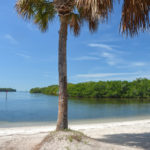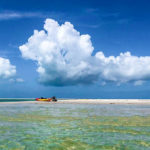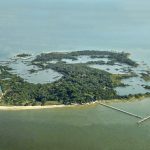Cockroach Bay – Horseshoe Run
 The unusual name was given by early Spanish settlers who felt the Horseshoe Crabs looked much like cockroaches, believing them to be related to the land insects. The Horseshoe crabs are no longer as predominant in this section of the Gulf Coast as they once were. We had a beautiful sunny day to explore one of the trails called Horseshoe Run…James
The unusual name was given by early Spanish settlers who felt the Horseshoe Crabs looked much like cockroaches, believing them to be related to the land insects. The Horseshoe crabs are no longer as predominant in this section of the Gulf Coast as they once were. We had a beautiful sunny day to explore one of the trails called Horseshoe Run…James

 This area was inhabited by the
This area was inhabited by the  Scale Key is part of the Cedar Keys chain located in Levy County.
Scale Key is part of the Cedar Keys chain located in Levy County.  Cedar Key is a city located
Cedar Key is a city located  In 1868 the Eberhard Faber Pencil Company built a lumber mill on Atsena Otie, supplying cedarwood to its pencil factory in New Jersey. A major hurricane and 10’ storm surge destroyed the mill in1896. Much of the salvaged homes as well as wreckage from the mill were floated over to re-establish the town of Cedar Key on Way Key……James
In 1868 the Eberhard Faber Pencil Company built a lumber mill on Atsena Otie, supplying cedarwood to its pencil factory in New Jersey. A major hurricane and 10’ storm surge destroyed the mill in1896. Much of the salvaged homes as well as wreckage from the mill were floated over to re-establish the town of Cedar Key on Way Key……James